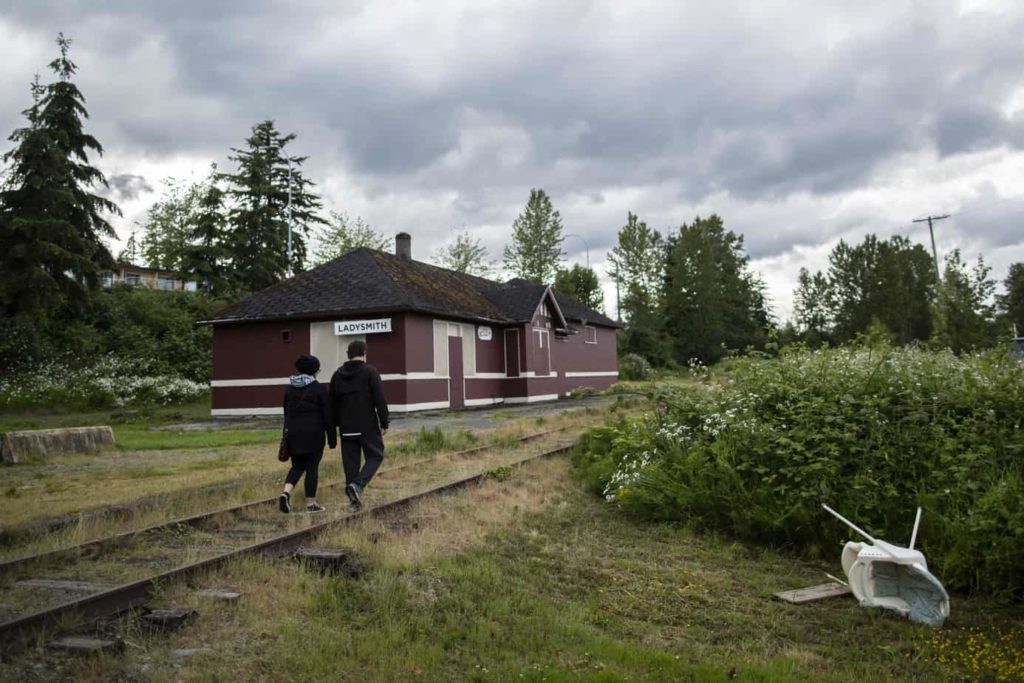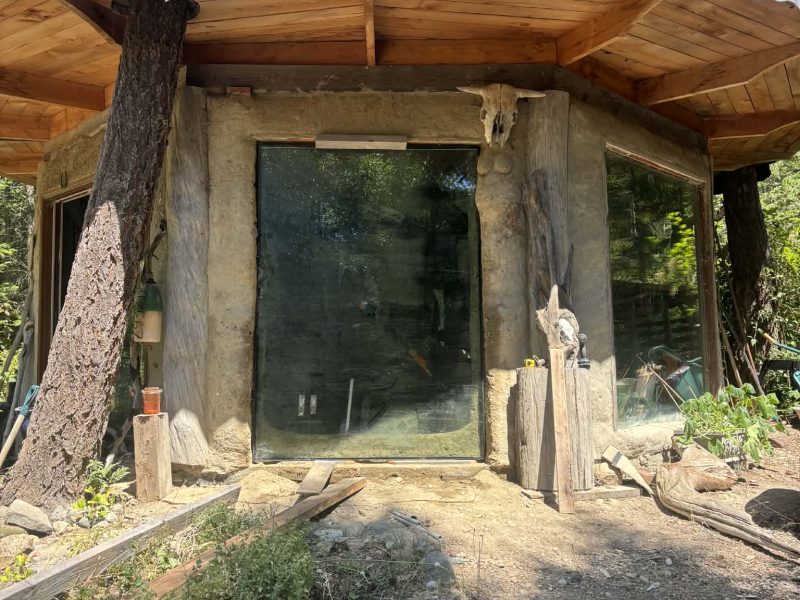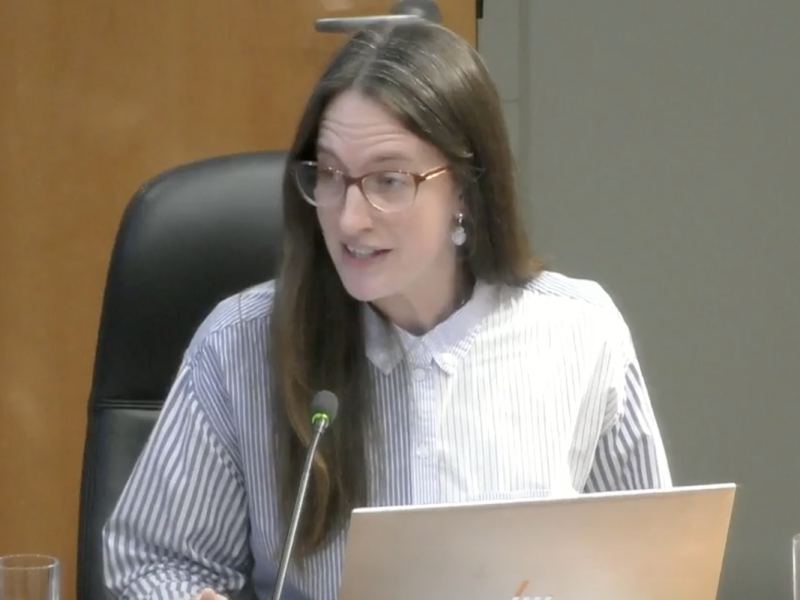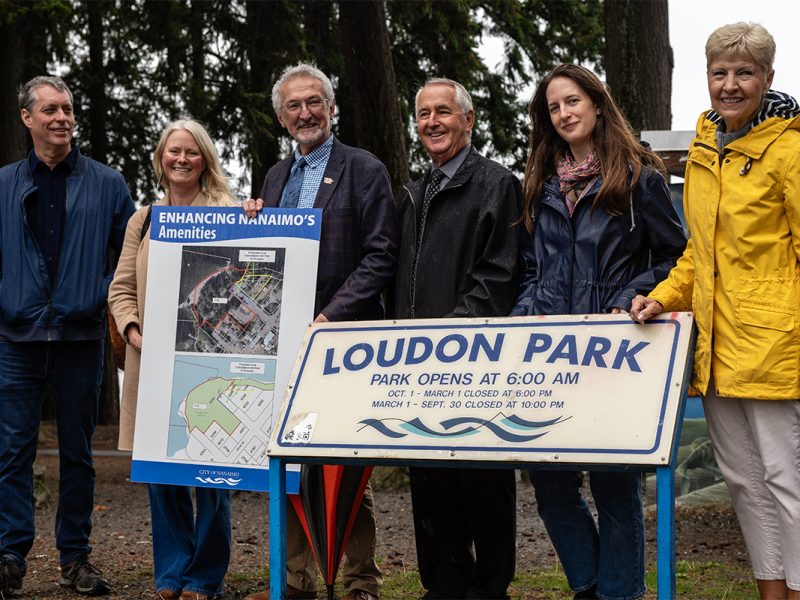
This story is part of a series. Read our story about the potential future of the railway here and the business case here.
The E&N Railway corridor has been cloaked in controversy since before the first spikes were even driven. Colonial powers essentially privatized roughly two million acres along southeast Vancouver Island in the 1880s to make way, in part, for rail.
According to a report by the Crown Land Registry Services, British Columbia granted the land to what was then called the Dominion of Canada as part of its bid to join the confederation with little input and no consent from many of its original Indigenous owners.
Coal baron Robert Dunsmuir, whose company was eventually contracted to build the rail line, would benefit from both the railway and the land that came with it. Documents show that Dunsmuir’s company completed the 115 kilometers of track between Esquimalt and Nanaimo (giving the rail line its name) in 1886, and eventually extended it to Victoria.
At an original construction cost of $626,000 per mile, the railway carried passengers between Ladysmith and Victoria. The original fare was $1.25 for the two-hour journey, according to the B.C. government’s most recent rail assessment report.
The line fulfilled its intended purpose, helping to speed the colonization of southeastern Vancouver Island. As settlers flooded in, the 14 First Nations along its path lost access to their own lands. Much of the land beyond the rail line itself was parcelled off to private interests, including forestry companies like Crown Zellerbach and MacMillan Bloedel.
In a book published by the Hul’qumi’num Treaty Group, which includes six Vancouver Island First Nations, author and chief negotiator Robert Morales wrote: “For us, the railway marked the beginning of a gradual and unremitting decline in our economic, cultural and social well-being.”
Then, and until recently, freight was an integral part of the railway’s lifeblood, with the original line supporting both the coal and lumber industries on Vancouver Island, as well as the growing Royal Navy base in Esquimalt.
In 1905, Dunsmuir’s son sold the corridor to the Canadian Pacific Railway (CPR), which extended the line to Parksville and Courtenay, and west through stands of old-growth forest to Port Alberni. At its height, the railway had 45 stations along its main line. Today 25 stations remain, sitting unused and shuttered in various states of disrepair.

After the rail line was sold to CPR, Indigenous communities north of Nanaimo, like the Snaw-Naw-As, had rights-of-way put through their reserves. Agreements facilitating this work were negotiated between CPR and the federal Department of Indian Affairs. In the case of the Snaw-Naw-As, the community was paid $650 dollars in compensation, according to court documents.
By the mid-20th century, rail use had started to decline. Passenger service along the Nanaimo to Port Alberni route ceased in 1953. In 1979, VIA Rail took over providing passenger service along the Victoria to Courtenay route, as freight traffic declined to around 8,500 carloads per year by 1998.
In 1999, U.S.-based RailAmerica Inc. purchased the Nanaimo to Port Alberni line, and leased the Victoria to Courtenay line from CPR. Despite the purchase, freight operations continued to fall in large part because trucking became a more viable alternative for the Island’s pulp and paper industry, according to the government’s 2010 assessment.
In the early 2000s, it became clear that RailAmerica wanted out, according to a news report at the time. Without the revenue generated by freight, maintenance costs along the line started to add up. By 2009, the B.C. government’s 2010 railway assessment reported that freight traffic had dwindled to barely 900 cars per year, and passenger ridership hovered around 41,000.
Some of that ridership decline can be attributed to what many have described as the backwards routing of the passenger train schedule -–which left Victoria at 8:30 a.m. – arriving in Courtenay by 1 p.m. and returning again to Victoria by nearly 6 p.m. This, on top of the automobile’s ascendancy and expansion of the highway system to accommodate all of the cars, served to erode rail ridership severely.
In a bid to prevent the corridor from being broken up, the Island Corridor Foundation (ICF) was formed in 2003 with the goal to take over the railway and manage the corridor on behalf of the five regional districts and 14 First Nations along the route. In 2005, the ICF formally took ownership of the E&N line from CPR, in exchange for hundreds of millions of dollars in federal tax credits.
But years of alleged neglect had taken their toll on the corridor. By the time VIA Rail shut down the passenger service altogether in 2011, the E&N Railway had the least traffic per kilometer of any short-line Canadian railroad, according to the B.C. government’s 2010 assessment.

False Starts and Failed Promises
Even as VIA Rail prepared to wind down its passenger service, the ICF was busy trying to find money to restore the line, expand service and increase ridership.
In its formal request to VIA Rail for continued service before the 2011 shutdown, the ICF said the corridor could be restored to safe operating conditions for only $15 million, plus $8 million in expected funding to restore VIA’s passenger cars. It also proposed relocating the VIA Rail storage and maintenance facilities to Nanaimo from Victoria. This would make it easier to run passenger service that left from Nanaimo in the morning headed south, making the service more attractive to local residents.
Adding incremental service improvements like track upgrades, higher train speeds, wheelchair accessibility, and rejuvenated stations could push annual ridership as high as 159,000 by 2026, the ICF said at the time.
The estimates in that request leaned heavily on a 2010 study by the Ministry of Transportation and Infrastructure, which pegged the cost of overall upgrades and expanded service at $70 million, plus roughly $1.4 million in an annual subsidy to the VIA Rail passenger service.
Larry Stevenson, the current Island Corridor Foundation CEO, says rounds of negotiations with the province, the federal government and VIA Rail continued in the years after the service was shut down. By 2015 the foundation was making progress. The ICF had inked agreements with VIA Rail and with the province for $7.5 million toward track repairs, part of a $20.9 million package that would see passenger service restored for a minimum of 10 years, Stevenson says.
But just when it seemed the funding would finally come through, things started to go off the rails.
Federal funding to match B.C.’s $7.5 million was delayed by the federal election that October. With Justin Trudeau’s Liberals sweeping the Conservatives from power, all the paperwork had to be resubmitted, Stevenson says.
Then that December, the Snaw-Naw-As First Nation filed a lawsuit against the ICF and Attorney General of Canada seeking a declaration that the corridor was no longer being used for rail, and that control over the roughly 11-acre right-of-way through its reserve should revert back to the First Nation for its own economic benefit.
“The federal government backed away and said they would not move forward until (the lawsuit) was resolved,” Stevenson says. “Everything kind of stopped in its tracks.”
In 2016 the Cowichan Tribes and Halalt First Nation filed lawsuits seeking their own land back.
In late June, the B.C. Supreme Court dismissed the five-year-old Snaw-Naw-As lawsuit. “Indeed, the likelihood of its future use for rail traffic may be bleak given it depends on the largess of government. However, government support of passenger rail service is not uncommon,” the judge argued.
Despite the court’s ruling, the Snaw-Naw-As First Nation says it plans to appeal.
Snaw-Naw-As councillor Brent Edwards said his community remains committed to getting the right-of-way back so it can pursue important housing development and economic opportunities on the land.
“The only reason Vancouver Island is a part of Canada is because of that railway,” Edwards said.
The loss of public lands to private interests triggered by the railway land grants means that not only have Indigenous communities like the Snaw-Naw-As been held back economically, but that all Vancouver Islanders have lost access to what would otherwise have been public lands, Edwards said.
“As a result, there’s very little Crown land in the south island,” Edwards said. “Our people have had to subsidize, and we’re still subsidizing the building of that railway to this day.”
There have been other stumbling blocks as well. The coal mine which would supply much of the promised freight traffic was never built, and Nanaimo’s $22 million cruise ship terminal has seen only a handful of vessels each year since it opened in 2011.
Frustrated over a lack of forward progress, the Association of Vancouver Island & Coastal Communities hired a consultant to review the ICF’s finances and governance.
The report released in 2016 claimed the ICF was overly secretive, lacked credibility with stakeholders, and had failed to adequately communicate political developments during its decade of existence.
The report said a perceived lack of transparency around the true viability of passenger rail hurt the ICF’s credibility. It also pointed to many ICF board members who, in interviews, did not seem aware of even basic information available on the ICF’s own website.
In its formal response, the ICF claimed that the Daniels report contained significant “factual errors or misunderstandings,” but accepted the majority of the report’s 18 recommendations. [end]
This story was edited by Lauren Kaljur and Lindsay Sample, with additional files from Lauren Kaljur. Photos and videos by Jesse Winter.



